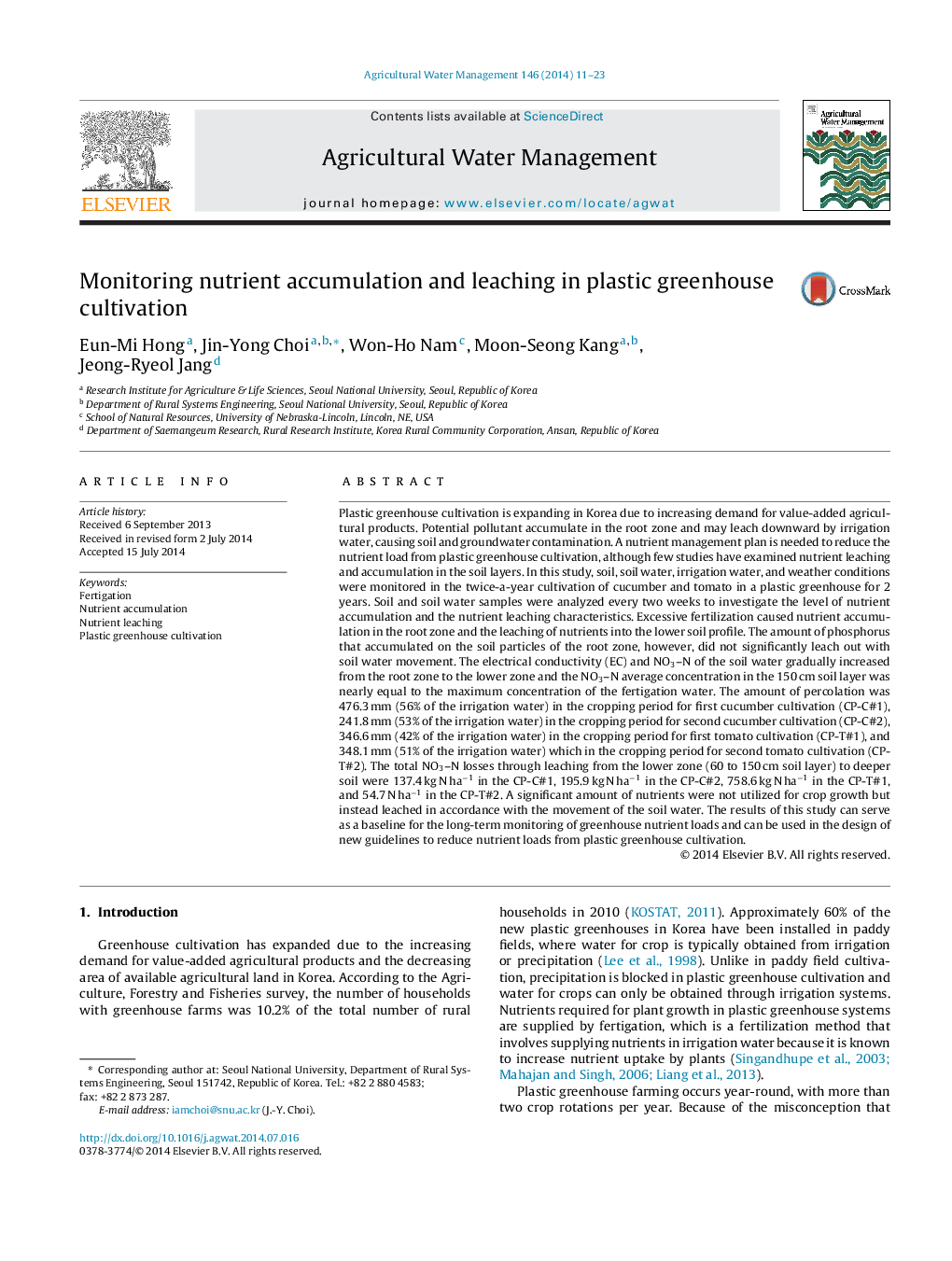| کد مقاله | کد نشریه | سال انتشار | مقاله انگلیسی | نسخه تمام متن |
|---|---|---|---|---|
| 6363930 | 1622933 | 2014 | 13 صفحه PDF | دانلود رایگان |
عنوان انگلیسی مقاله ISI
Monitoring nutrient accumulation and leaching in plastic greenhouse cultivation
ترجمه فارسی عنوان
نظارت بر انباشت مواد مغذی و اشباع در کشت گلخانه ای پلاستیکی
دانلود مقاله + سفارش ترجمه
دانلود مقاله ISI انگلیسی
رایگان برای ایرانیان
موضوعات مرتبط
علوم زیستی و بیوفناوری
علوم کشاورزی و بیولوژیک
علوم زراعت و اصلاح نباتات
چکیده انگلیسی
Plastic greenhouse cultivation is expanding in Korea due to increasing demand for value-added agricultural products. Potential pollutant accumulate in the root zone and may leach downward by irrigation water, causing soil and groundwater contamination. A nutrient management plan is needed to reduce the nutrient load from plastic greenhouse cultivation, although few studies have examined nutrient leaching and accumulation in the soil layers. In this study, soil, soil water, irrigation water, and weather conditions were monitored in the twice-a-year cultivation of cucumber and tomato in a plastic greenhouse for 2 years. Soil and soil water samples were analyzed every two weeks to investigate the level of nutrient accumulation and the nutrient leaching characteristics. Excessive fertilization caused nutrient accumulation in the root zone and the leaching of nutrients into the lower soil profile. The amount of phosphorus that accumulated on the soil particles of the root zone, however, did not significantly leach out with soil water movement. The electrical conductivity (EC) and NO3-N of the soil water gradually increased from the root zone to the lower zone and the NO3-N average concentration in the 150 cm soil layer was nearly equal to the maximum concentration of the fertigation water. The amount of percolation was 476.3 mm (56% of the irrigation water) in the cropping period for first cucumber cultivation (CP-C#1), 241.8 mm (53% of the irrigation water) in the cropping period for second cucumber cultivation (CP-C#2), 346.6 mm (42% of the irrigation water) in the cropping period for first tomato cultivation (CP-T#1), and 348.1 mm (51% of the irrigation water) which in the cropping period for second tomato cultivation (CP-T#2). The total NO3-N losses through leaching from the lower zone (60 to 150 cm soil layer) to deeper soil were 137.4 kg N haâ1 in the CP-C#1, 195.9 kg N haâ1 in the CP-C#2, 758.6 kg N haâ1 in the CP-T#1, and 54.7 N haâ1 in the CP-T#2. A significant amount of nutrients were not utilized for crop growth but instead leached in accordance with the movement of the soil water. The results of this study can serve as a baseline for the long-term monitoring of greenhouse nutrient loads and can be used in the design of new guidelines to reduce nutrient loads from plastic greenhouse cultivation.
ناشر
Database: Elsevier - ScienceDirect (ساینس دایرکت)
Journal: Agricultural Water Management - Volume 146, December 2014, Pages 11-23
Journal: Agricultural Water Management - Volume 146, December 2014, Pages 11-23
نویسندگان
Eun-Mi Hong, Jin-Yong Choi, Won-Ho Nam, Moon-Seong Kang, Jeong-Ryeol Jang,
